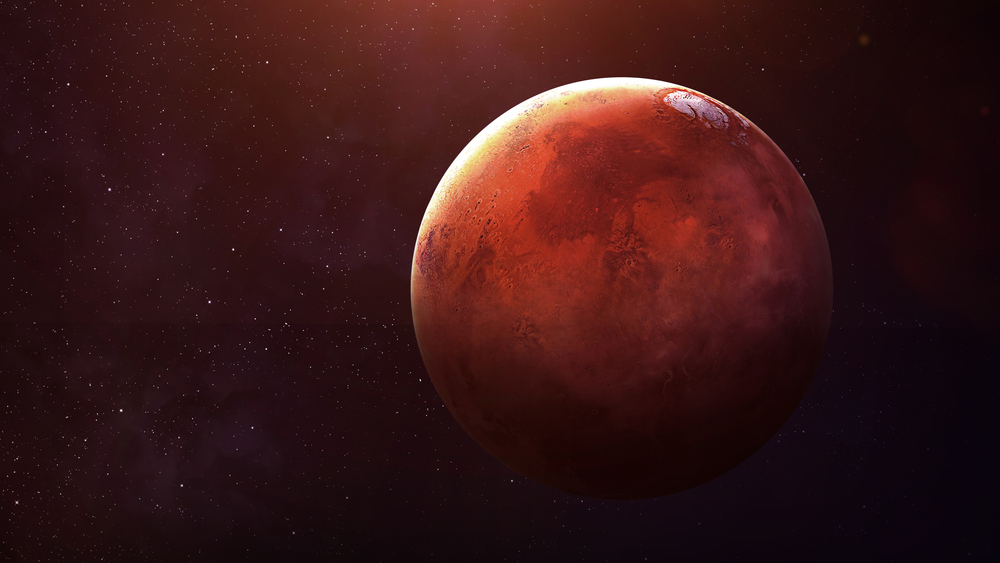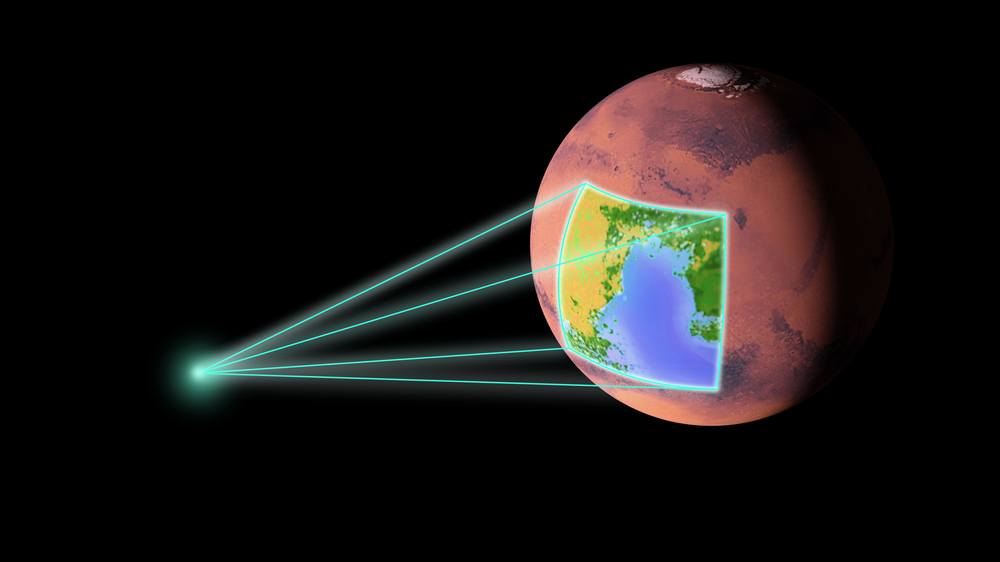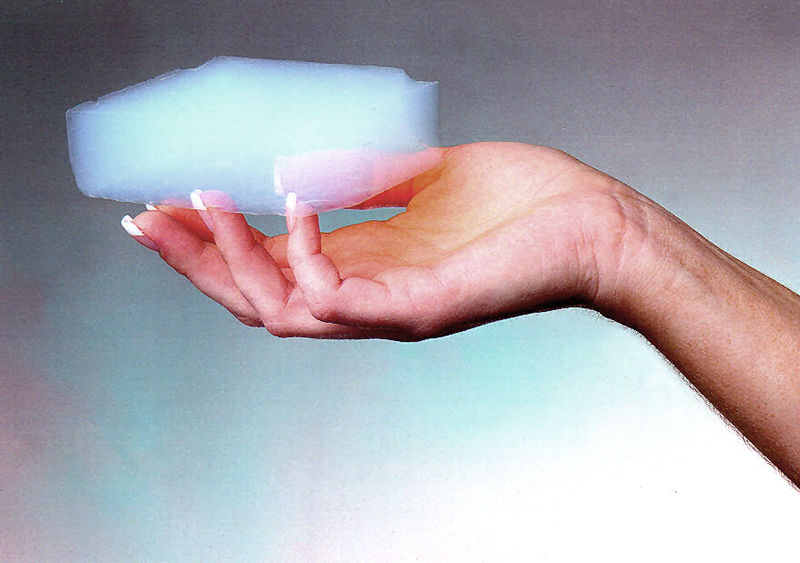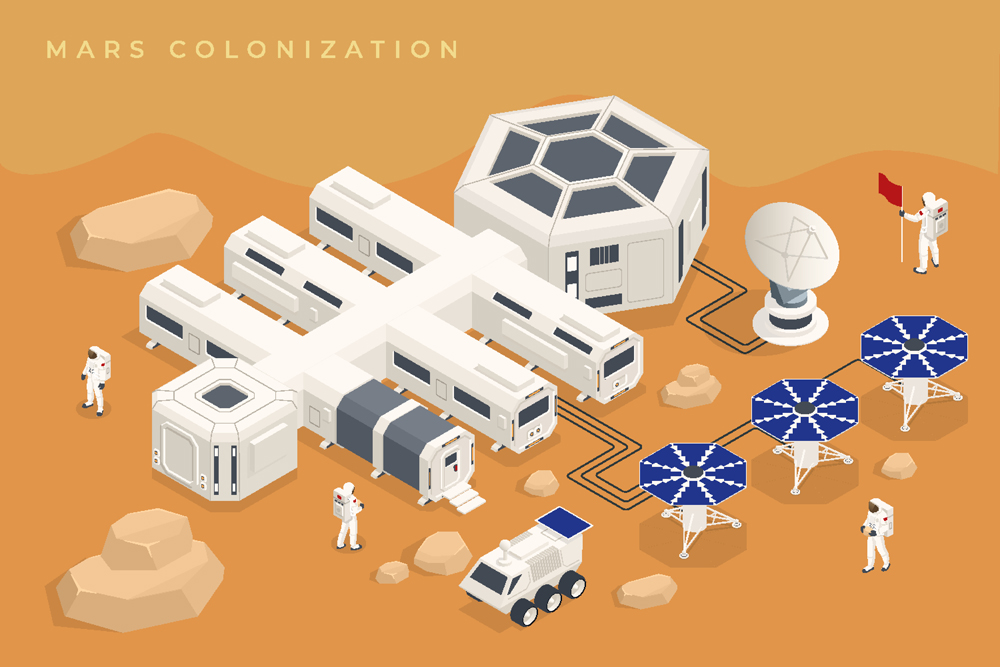Poles of Mars, like Earth, have a thick landmass of ice. Many experts including the SpaceX founder Elon Musk contest that nuking poles of Mars would release a good amount of CO2 presently trapped, into the atmosphere and also sublimate ice into water.
Science fiction literature is brimming with content about terraforming—the process of creating a habitable planet like Earth. From The War of the Worlds by HG Wells to The Martian Way by Isaac Asimov, people have long been fascinated by this idea.
But now, terraforming is no longer confined to the fanciful thinking of science fiction writers. Even astronomers are seriously considering this idea as we continue to look towards the stars and our first human colony away from Earth.
So, what exactly is terraforming, and why might our neighbor, Mars, be a great place to try out this terraforming activity? Let’s find out!

What Is Terraforming?
To put it simply, terraforming a planet or other celestial entity, means manipulating its atmosphere and other environmental characteristics so that the climate of that planet becomes habitable for lifeforms. The best option would be to alter the planetary climate, such that humans could dwell there even without a spacesuit.

Why Is Mars A Good Choice For Terraforming?
Of the eight major planets in our solar system, Mars seems to be the best bet for terraforming. Why? Well, quite simply, Mercury and Venus are too hot for a spacecraft to survive, let alone humans. The Jovian planets—Jupiter onwards to Neptune—are gas planets, which means they don’t even have solid ground to put our feet on! Clearly, Mars seems to be a better choice.
Challenges Associated With Terraforming Mars
However, even terraforming Mars is replete with challenges. Mars has a very thin atmosphere and an average temperature of -63oC. Moreover, the air pressure on Mars is not even 1% of what we have on Earth. That being said, the very first challenge we need to address is to warm up the planet and increase atmospheric pressure. We need to address these two challenges first, and only then we can think about other concerns, such as how to grow food or how to shield any inhabitants of Mars from cosmic radiation.
Mars Wasn’t Always Inhospitable
At this moment, Mars doesn’t seem very hospitable to life, but this wasn’t always the case. Scientists opine that Mars used to have a thicker atmosphere and liquid water on the planet. Water is another important element, along with breathable air, which we would need for survival on any terraformed planet. Sadly, the thick atmosphere of Mars was ripped away into outer space in the last few billion years, so whatever water was present froze or evaporated, rendering the planet hostile to life.

To restore the planet to its old glory and make sure we can breathe and stay conscious on Mars, we need to terraform its atmosphere. Earth’s atmosphere consists of 21% oxygen, 78% nitrogen, and 1% other gases/elements. Now, while we don’t need exactly this mixture for all the gases, we would need a very similar amount of O2.
Also Read: Why Is Mars Called The “Dead Planet?”
Making Mars Habitable
Giant Orbital Mirrors
After filling Mars’s environment with a sufficient concentration of O2, we also need to make it warmer. As mentioned earlier, with an average temperature of -63oC, it’s too cold to survive on the cold and red planet. Researchers working for NASA in 1993 proposed a way to warm up Mars. They suggested constructing giant orbital mirrors to reflect sunlight onto the surface. The idea was to redirect the sunlight by strategically placing giant orbital mirrors over and around Mars. Think of this method like the large mirrors used by Archimedes to destroy an enemy’s ships using the heat from sunlight. Researchers estimate that by using this strategy, even the frozen water (ice) on the planet would be melted, which would provide us with water—another crucial element (water) for our survival on a foreign planet.
Greenhouse Gases
Another way to warm the planet is by using greenhouse gases. Yes, those infamous gases that are causing global warming on our own planet. You see, “warming” is the keyword here. Greenhouse gases, due to their very nature, are great at trapping heat in the atmosphere and thereby elevating the temperature. And on Mars, this is exactly what we want. In other words, our villain on Earth could be our hero on Mars! Experts suggest that greenhouse gases would thicken the Martian atmosphere, raise the surface temperature, and also shield the planet from excess cosmic radiation.
CO2 is the most common greenhouse gas on our planet, so the question becomes, is there enough CO2 on Mars to thicken the atmosphere?
Nuking The Poles
The poles of Mars, like Earth, possess a thick landmass of ice. Many experts, including SpaceX founder Elon Musk, contest that nuking the poles of Mars would release a good amount of CO2 that is presently trapped into the atmosphere, and also sublimate ice into water.

Martian Soil
Another good source for extracting CO2 would be Martian soil, which is rich in carbon, but it’s tricky to unlock. The carbon-rich mineral on Mars’ surface would need to be heated up to a few thousand degrees before it released its CO2.
Mars’ surface area is around 144 million square kilometers, so we would need billions of tons of gas to fully envelop the red planet. The energy required to do so would be nearly inconceivable. It would mean constructing and running gigantic nuclear power plants on Mars for several decades in order to fill Mars with enough greenhouse gases to warm its surface temperature.
Aerogel
Another element that could play an important role in trapping heat on Mars is aerogel. Aerogel is one of the lightest materials known to humans. Aerogel is a super-low density solid, and is actually composed of 99% air! It is also a good insulator, which is why it’s being used in NASA’s current Mars Rovers mission.

Harvard researcher Robin Wordsworth, in a recently published paper, demonstrated how aerogels can be used on Mars. Wordsworth shined a lamp to mimic Martian sunlight falling on aerogel. By doing this, he was able to keep the surface below the aerogel warm, up to 65oC. He argues that this type of aerogel cover on the red planet would help in trapping heat in Mars’ atmosphere.
Unfortunately, aerogel is not perfect. It is quite brittle, and producing it in large enough quantities would be extremely challenging.
Comets
Yes, there is another decidedly violent way to terraform Mars…. colliding comets!

Comets are a rich source of nitrogen, oxygen, and hydrogen—the elementary components required for an Earth-like atmosphere. If we could figure out a way to redirect comets and make them crash on the surface of Mars, a good amount of nitrogen and oxygen would be released into the Martian atmosphere.
Yet, some experts warn about the perils of doing this. They contest that bombarding Mars with comets would be devastating. Doing so would wipe out whatever evidence of life we haven’t discovered and would decimate the pristine geological record of the solar system, which we can no longer find on Earth.
Also Read: How Would Humans Protect Themselves On Mars?
How Close Are We To Terraforming Mars?
The first step to terraforming Mars would be to land the first human (or group of humans) on Mars, just like we once landed on the Moon. However, even doing that is difficult, let alone conducting a mission to completely terraform the planet. Many years from now, if we continue on our current trajectory, we should be able to get this done, albeit with spacesuits.

Once we arrive on the planet, our next step would be to establish the first scientific outpost on the planet, to ensure that there is some level of sustainability on the foreign planet. The most challenging part would be to scale up the human presence from a handful of trained astronauts to thousands of space enthusiasts. We would definitely need manpower in the thousands to kickstart a full terraforming mission.
Ramifications Of Terraforming Mars
The people who would terraform Mars would be Martians. These Martians would also adapt generation after generation in the foreign environment. Given that the gravity on Mars is much lower, Martians are likely to become taller than us. They may develop new blood chemistry, given that the air pressure would be different. All in all, they are likely to diverge from us and become a new species as the process of evolution kicks in. The fact that pioneers and explorers would begin evolving into Martians would also be another point of discussion.
Ethical Concerns
Although it looks unlikely that we will terraform Mars in the near future, assuming that we do, should we really embark on meddling with the planet’s natural environment? Should we really promote the idea of having a discretionary planet in our backyard? These are some ethical questions that would need a convincing answer.
Given the difficulty involved in manipulating Mars to our convenience, it would be much easier to simply keep Earth’s environment clean and conducive to life.
In summary, it’s unlikely that we will see human civilization successfully colonizing Mars in our lifetime. However, innovators and researchers are in pursuit of developing technology that may counter this presumption. Only time will tell how successful humanity will be in making its presence felt beyond Earth in this magnanimous Universe!
How well do you understand the article above!

References (click to expand)
- Print Detailed Mars Facts - NASA's Mars Exploration Program. The National Aeronautics and Space Administration
- ZUBRIN, R., & MCKAY, C. (1993, June 28). Technological requirements for terraforming Mars. 29th Joint Propulsion Conference and Exhibit. American Institute of Aeronautics and Astronautics.
- Want to Colonize Mars? Aerogel Could Help. The Jet Propulsion Laboratory
- Jakosky, B. M., & Edwards, C. S. (2018, July 30). Inventory of CO2 available for terraforming Mars. Nature Astronomy. Springer Science and Business Media LLC.
- CAN MARS BE TERRAFORMED? B. M. Jakosky1 and C. S. .... The Universities Space Research Association
